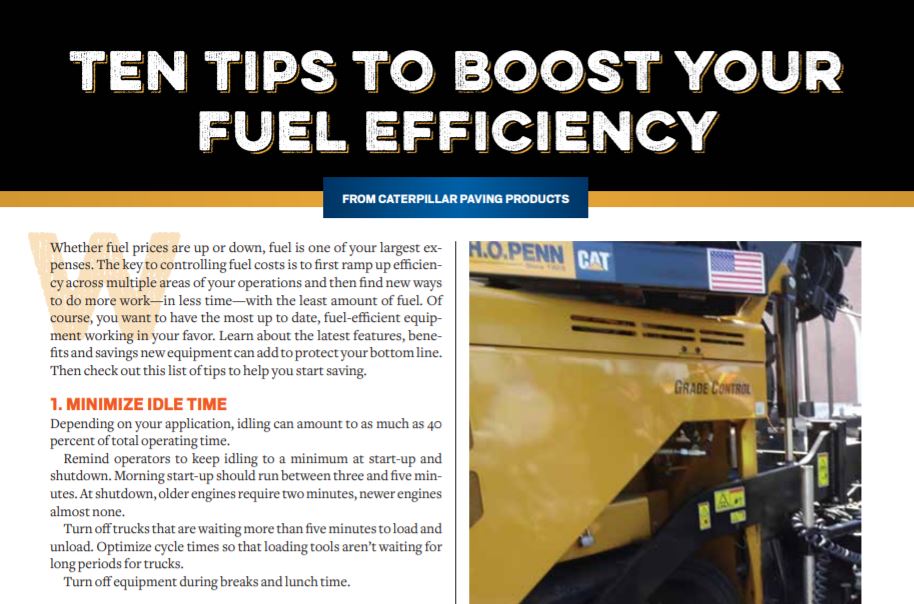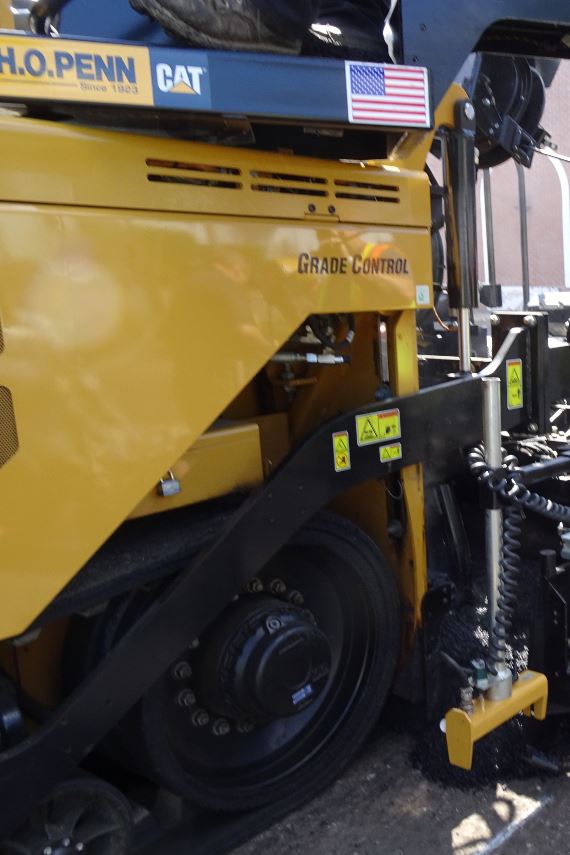Ten Tips to Boost Your Fuel Efficiency
BY Caterpillar Paving Products

Whether fuel prices are up or down, fuel is one of your largest expenses. The key to controlling fuel costs is to first ramp up efficiency across multiple areas of your operations and then find new ways to do more work—in less time—with the least amount of fuel. Of course, you want to have the most up to date, fuel-efficient equipment working in your favor. Learn about the latest features, benefits and savings new equipment can add to protect your bottom line. Then check out this list of tips to help you start saving.
1. Minimize idle time
Depending on your application, idling can amount to as much as 40 percent of total operating time.
Remind operators to keep idling to a minimum at start-up and shutdown. Morning start-up should run between three and five minutes. At shutdown, older engines require two minutes, newer engines almost none.
Turn off trucks that are waiting more than five minutes to load and unload. Optimize cycle times so that loading tools aren’t waiting for long periods for trucks.
Turn off equipment during breaks and lunch time.
2. Train your operators
Operator machine handling plays a big factor in fuel efficiency. Make sure all operators are properly trained on each machine. They should optimize the relationship between ground speed and engine rpm. Studies have shown 5-15 percent fuel efficiency at 75 percent power and 15-30 percent efficiency at 50 percent power.
3. Size the machine for the job
Too much or too little horsepower can drastically affect fuel efficiency. If you need help, ask your equipment dealer to match the right machine to the job you’re doing.
4. Set up your job sit efficiently
Effectively plan your job site travel patterns to reduce idling and minimize turns.
5. Use technology to track and measure
Onboard technologies that monitor machine operating parameters, such as fuel consumption, are highly accurate and will add to your overall efficiency.

Keep machines in top condition and use modern, up to date technology to assist in saving on fuel use, thus fuel costs. Photo courtesy of John Ball of Top Quality Paving & Training, Manchester, New Hampshire
6. Keep machines in top condition
Diligent maintenance not only saves fuel, but reduces repairs, improves reliability and minimizes exhaust emissions. Blocked air filters can increase fuel consumption by 20 percent. One stuck valve lifter can increase fuel usage by 10-15 percent. Improperly working thermostats have been noted to increase fuel consumption by 25 percent.
7. Check for faulty fuel caps
Damaged or loose fuel caps cause fuel evaporation.
8. Maintain proper tire inflation
Under-inflation by just 6 psi consumes 3 percent more fuel.
9. Use recommended fuel grade
Be sure to use the recommended fuel grade depending on ambient temperature and weather conditions.
10. Protect fuel storage
Minimize evaporation. If possible, keep storage tanks well-shaded. Less evaporation occurs with white or aluminum painted storage tanks versus red.
